FUNDING CUTS IMPACT CT HUMANITIES: Help CT Humanities navigate recent funding cuts and continue our vital work across Connecticut. All donations made to CTH will be matched dollar-for-dollar up to $50,000. Donate today!
Now Viewing:
The Industrial United States 1870-1900

Charles W. Morgan: New England’s Last Surviving Wooden Whaling Ship
As the last surviving wooden whaling ship of New England, the Morgan is representative of a typical 19th-century whaling vessel.
Read
Connecticut History Day 2025: Rights and Responsibilities in History
Connecticut’s people have taken on responsibilities to establish state and national rights through the courts, protests, and everyday acts.
Read
L.D. Brown and Son Silk Mill: A Staple in Middletown’s South Farms District
With established factories in Mansfield and Middletown, Lewis Dunham Brown and his son, Henry Lewis Brown, were pioneers in the US silk industry.
Read
Early Connecticut Gas Light Companies
The first private gas light companies in Connecticut appeared just before 1850 in New Haven, Hartford, and Bridgeport.
Read
Illuminating Connecticut’s Past: The Bradley & Hubbard Legacy
Meriden’s Bradley & Hubbard Manufacturing Company was an industry-leading American manufacturer of kerosene lamps and metal household items.
Read
Miss Porter’s School in Farmington
Miss Porter’s School, founded in 1843 in Farmington, is an elite, female, privately funded, 40-acre, educational institution in central Connecticut.
Read
Disaster on the Sound: The Collision of the Steamboats Stonington and Narragansett
The crash involving the S.S. Stonington and the S.S. Narragansett resulted in the death of dozens, massive destruction, and a media frenzy.
Read
Charlotte Perkins Gilman
Best remembered for her short story “The Yellow Wallpaper,” this Hartford author’s larger legacy is a life dedicated to women’s issues and social reform.
Read
Bursting of the Staffordville Reservoir – Today in History: March 27
On March 27, 1877, the Staffordville Reservoir Company’s dam burst, flooding the valley for a distance of five miles and causing the loss of two lives.
Read
Lydia Sherman: The Derby Poisoner
Lydia Sherman confessed to killing three husbands and four children, but it is believed that the total number of her victims may be much higher.
Read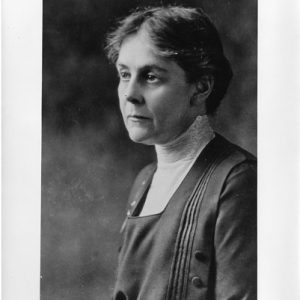
Alice Hamilton: The Nation’s Leading Expert on Industrial Diseases
Dr. Alice Hamilton was a leading authority on industrial diseases and the first female faculty member at Harvard before she retired to Hadlyme, Connecticut.
Read
Connecticut’s French Connections
From Huguenots to French Canadian mill workers to modern immigration, Connecticut has always been a place shaped, in part, by a steady French influence.
Read
Lockwood-Mathews Mansion Captures the Gilded Age in Norwalk
The Lockwood-Mathews Mansion provides a glimpse into the opulence of the Gilded Age when railroad tycoons built summer homes along the New England shoreline.
Read
Southington Cutlery Company: From Silverware to Hardware
Initially known for table cutlery, the Southington Cutlery Company began operations in a two-story brick factory in downtown Southington in 1867.
Read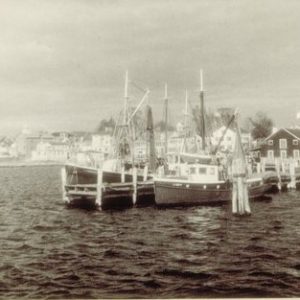
The Sea in their Blood: The Portuguese in New London County
Many Portuguese immigrants came to the US as mariners serving aboard ships, some remained to build new lives and communities in Connecticut.
Read
Sarah Boone: First Connecticut Black Woman to Receive Patent
In1892, Sarah Boone of New Haven became the first Black woman in Connecticut to be awarded a patent—for an improvement in the use of an ironing board.
Read
Charles Ethan Porter, Portrait of a 19th-Century African American Painter
Charles Ethan Porter was a prolific still life painter in the 19th and early 20th century.
Read
Dr. Mary B. Moody Challenges Victorian Mores About Women in Medicine
New Haven resident Dr. Mary Moody the first female graduate of the medical school at the University of Buffalo, and the first female member of the American Association of Anatomists.
Read
New London Harbor Lighthouse: Connecticut’s First Official Lighthouse
New London Harbor Lighthouse, originally opened in 1761 and rebuilt in 1801, is Connecticut’s oldest surviving and tallest lighthouse.
Read
Oldest College Daily – Today in History: January 28
On January 28, 1878, the first edition of the Yale News proclaimed, “The innovation which we begin by this morning’s issue is justified by the dullness of the times, and by the demand for news among us.”
Read
Africans in Search of the American Dream: Cape Verdean Whalers and Sealers
Cape Verdeans formed parts of whaling and sealing crews leaving Connecticut since the early 19th century, sometimes even rising to positions of authority.
Read
The Stamford Foundry Company Made Notable Stoves
When it ceased operations in the mid-1950s after over 120 years, The Stamford Foundry Company was the oldest known stove works in America.
Read
The “Welcoming Beacon” of Sheffield Island Lighthouse
Sheffield Island, is home to one of Connecticut’s historic lighthouses—a stone structure with a celebrated past dating back two hundred years.
Read
Yankee Ingenuity: Curtis Veeder, a Mechanical Genius and Shrewd Businessman
Curtis Veeder patented a bicycle seat he sold to the Pope Company, and later invented a cyclometer for measuring distances traveled by bicycles.
Read
Children of the Reconcentrados: Caroline Selden’s Cuban School
During the Cuban War of Independence, Caroline Selden opened a school for Cuban children in Brooklyn, NY and Old Saybrook, CT.
Read
Briggs Manufacturing Drives Voluntown’s 19th-Century Cotton Economy
The Briggs Manufacturing Company was the premier employer in Voluntown, Connecticut, throughout the latter half of the 19th century.
Read
Lee’s Academy: An Icon of Education for 200 Years
For over two hundred years, Lee’s Academy has been a staple of education in Madison, Connecticut.
Read
Julian Alden Weir: The “Heart” of American Impressionism
From Windham to Branchville, peaceful Connecticut locales provided Julian Alden Weir the inspiration to create hundreds of paintings and become one of America’s leading Impressionists.
Read
Frank Duryea Drives the First Automobile in Connecticut
In 1893, Frank Duryea, along with his brother, built one of the first cars in the country to have an internal combustion engine.
Read
Arbor Day’s Roots in Connecticut – Who Knew?
Connecticut’s Reverend Birdsey Grant Northrop popularized Arbor Day celebrations in schools across the country.
Read
George Griffin: “Devoted Friend” to Samuel Clemens
Mark Twain wrote The Adventures of Huckleberry Finn and used his “good-natured” and “devoted” servant, George Griffin, as a likely model for one of literature’s most memorable figures—Jim, the runaway enslaved man.
Read
The Slaters Go Round the World
In 1894, a well-to-do Norwich family set sail from New London on a ship outfitted with Persian rugs, oil paintings, a library, and 75 cases of champagne.
Read
Mary Townsend Seymour: Hartford’s Organizer, Activist, and Suffragist
Mary Townsend Seymour was a leading organizer, civil rights activist, suffragist, and so much more in Hartford during the early 20th century.
Read
Charles Ritchel and the Dirigible
An entrepreneur’s design for a lighter-than-air vehicle takes flight in the late 1800s and inspires a new state industry.
Read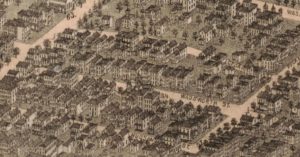
The Lives of Addie Brown and Rebecca Primus Told Through their Loving Letters
Addie Brown and Rebecca Primus were two free Black women whose lives intersected in Hartford, Connecticut in the 19th century. Letters written between them imply their relationship was more than friendship.
Read
First Connecticut Carpet Mills Emerge in Simsbury and Enfield
In the 1820s, the first two notable carpetmakers emerged in the north central part of Connecticut—the Tariff Manufacturing Company and the Thompsonville Carpet Manufacturing Company.
Read
Hartford’s Charles Dillingham Discovered Broadway Stars
After growing up in Hartford, Charles Dillingham explored numerous career paths including newspaper publishing, politics, and—most famously—theatrical managing and producing.
Read
Phillips’ Milk of Magnesia Originated in Stamford
In 1873, Charles H. Phillips patented Milk of Magnesia and his company produced the popular antacid and laxative in Stamford, Connecticut, until 1976.
Read
Cromwell’s Iron Men Made Toys for Boys and Girls
The J & E Stevens Company eventually became the largest manufacturer of cast-iron toys in the country.
Read
The First University of Connecticut Trustees
When the University of Connecticut started life as the Storrs Agricultural School in 1881, Governor Hobart Bigelow appointed its first eight trustees—all with agricultural backgrounds.
Read
How the Wobblies Won Free Speech
Denied the right to free assembly in public spaces, Connecticut workers joined in a larger national movement of civil disobedience.
Read
Yung Wing’s Dream: The Chinese Educational Mission, 1872-1881
In all, 120 Chinese students came to live and study in New England. When they returned home, they served as diplomats, engineers, naval officers, physicians, educators, administrators, and magistrates.
Read
Late 19th-Century Immigration in Connecticut
Immigration to Connecticut in the second half of the 19th century proceeded much as it had in earlier decades.
Read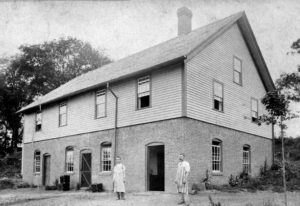
Andover’s Award-Winning Creamery
Started in 1886 by town residents, the Andover Creamery Corporation typified cooperative agricultural enterprises of the late 19th and early 20th centuries.
Read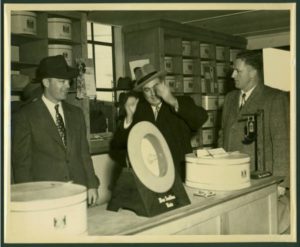
The Danbury Hatters
References to the hat making industry abound in Danbury and continue to shape much of the city’s identity today.
Read
An Artist’s Life in Hartford: The Early Career of Dwight Tryon
Hartford native Dwight Tryon enjoyed a long, successful career as a landscape painter and teacher with studios in New York City and Massachusetts.
Read
W. J. Squire’s Gill Net Manufactory in East Haddam
In the early 1870s, Wilbur J. Squire (1837-1890) built his factory for the manufacture of gill nets in East Haddam.
Read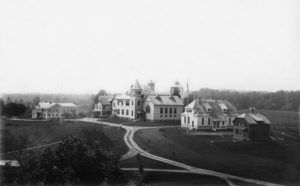
The Yale-Storrs Controversy
In the late 1800s, under pressure from frustrated farmers, the Connecticut General Assembly voted to transfer land-grant status and revenue from Yale to the Storrs Agricultural School (UConn).
Read
Steamboat Accident – Today in History: March 29
On March 29, 1876, the steamboat City of Hartford hit the Air Line Railroad Bridge on the Connecticut River at Middletown.
Read
Connecticut and the Comstock Law
Connecticut passed its own state law in 1879 that carried the anti-contraception movement further than any other state in the country.
Read
The Telescoping Fishing Rod – Today in History: March 8
On March 8, 1887, Everett Horton, a Bristol mechanic, patented a fishing rod of telescoping steel tubes.
Read

Lounsbury Elected Governor – Today in History: January 4
On January 4th 1899, George Edward Lounsbury was elected the 58th Governor of Connecticut, for which he served roughly three years.
Read
Portland Improves the Steam Engine
Thomas R. Pickering, an engineer, ran a factory power plant in the mid-1800s and made improvements.
Read
Connecticut’s Mulberry Craze
Connecticut, especially Windham and Tolland Counties, was the epicenter of US raw-silk production in the mid-19th century.
Read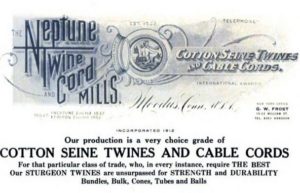
Intertwining Family Businesses
Emory Johnson, a farmer from Chatham, Connecticut, moved to East Haddam and operated one of the area’s most successful businesses of the late 19th century.
Read
The Shoe Box Murder Mystery
On August 8, 1886, Edward Terrill and his dog uncovered what appeared to be a box of a dozen shoes that had recently fallen from a cart.
Read
Horseshoe Nail Capital of the World – Who Knew?
In the late 19th century, George Capewell formed the Capewell Horse Nail Company, which mass produced horseshoe nails.
Read
Flying High with Early Dirigible
In what would later be described as “the first flight of a man-carrying dirigible in America,” aeronaut Mark Quinlan piloted a machine designed and patented by Charles F. Ritchel.
Read
The Soldiers and Sailors Memorial Arch, Hartford
Situated in Bushnell Park, the Soldiers and Sailors Memorial Arch honors the more than 4,000 Hartford men who fought for the Union during the Civil War.
Read
The Innumerable Accolades Afforded Dr. William H. Welch
Trained at Yale, William Welch was a native of Norfolk, Connecticut, and one of the most celebrated physicians of his time.
Read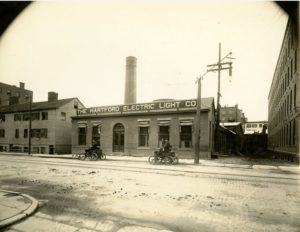
Let There Be Light: An Early History of the Hartford Electric Light Company
As cities switched from gas lamps to electric lighting, one observer noted that Hartford was “far in the lead of any other city in the world in the use of electricity for light and power per capita.”
Read
Connecticut’s First Municipal Electric Utility
The first municipal electric plant in Connecticut began operating in the City of South Norwalk in 1892 to provide low-cost electricity.
Read
Leatherman Dies – Today in History: March 20
On March 20, 1889, the Old Leatherman, so called for the clothing that he fashioned for himself, is thought to have died.
Read
Park Central Hotel Boiler Explosion – Today in History: February 18
In the pre-dawn hours of February 18, 1889, the Park Central Hotel in Hartford was ripped apart by a steam boiler explosion.
Read
First Commercial Telephone Exchange – Today in History: January 28
On January 28, 1878, the Boardman Building became the site of the world’s first commercial telephone exchange, the District Telephone Company of New Haven.
Read
The Tariffville Disaster – Today in History: January 15
On January 14, 1878, at about 10:00 p.m., a span of the Tariffville Bridge gave way, plunging a Connecticut Western Railroad train into the Farmington River.
Read
Meriden’s Silver Lining
Despite large numbers of local industries going out of business by the start of the Civil War, Horace and Dennis Wilcox, helped establish a lucrative silver industry in Meriden.
Read
P. T. Barnum Dies – Today in History: April 7
On April 7, 1891, the showman and entertainer, P. T. (Phineas Taylor) Barnum died in Bridgeport.
Read
An Orderly & Decent Government: Making Self-Government Work, 1888-1905
Connecticut’s ancient system of town-based representation ensured the continuation of small town values and perspectives.
Read
An Orderly & Decent Government: Searching for the Common Good, 1888-1905
Stimulated by immigration and industrialization, Connecticut cities expanded rapidly
Read
An Orderly & Decent Government: Significant Events & Developments, 1888-1905
Connecticut saw its population of immigrants from southern and eastern Europe swell in the last decades of the 19th century.
Read
An Orderly & Decent Government: Making Self-Government Work, 1866-1887
The late 1800s witnessed significant challenges to Connecticut’s voting and taxation laws.
Read
An Orderly & Decent Government: Searching for the Common Good, 1866-1887
In 1873, the legislature began to look more closely at the problems of Connecticut’s workers.
Read
An Orderly & Decent Government: Significant Events & Developments, 1866-1887
After the Civil War, arms manufacturing kept Connecticut industries busy, but an economic depression in the 1870s drastically changed things.
Read
An Orderly & Decent Government: The Rise of the Factory, 1866-1887
In the years following the Civil War, Connecticut’s transformation to an urban, industrial state intensified.
Read
Blizzard of 1888 Devastates State
An unexpected and deadly March storm, stretching from Washington, DC, to the Canadian border, buried Connecticut in as much as 50 inches of snow.
Read
Ivory Cutting: The Rise and Decline of a Connecticut Industry
At one time, manufacturing facilities in the town of Deep River and village of Ivoryton in Essex processed up to 90 percent of the ivory imported into the US.
Read
A Bird’s-eye View of Moosup
This depiction of a Quinebaug Valley town and its satellite communities—Uniondale and Almyville—records an idealized view of the 19th-century textile boom.
Read
Hubbell’s Pull-Chain Electrical Light Socket – Today in History: August 11
On August 11, 1896, Bridgeport inventor and industrialist Harvey Hubbell patented a socket for incandescent lamps.
Read
Connecticut State Capitol
Still in use today, the State Capitol continues to be a crucial site of lawmaking, state business, protest, advocacy, and more.
Read
Three Young Engineers: Charting New Haven
When the United States Coast Survey set out to compile detailed charts of New Haven Harbor in the 1870s, they hired recent graduates of Yale’s Sheffield Scientific School as assistants.
Read
Bird’s-eye Views of Connecticut Offer Idealized Portraits of Progress
Panoramic prints of growing cities and towns became popular in the late 1800s as Connecticut transformed from an agricultural to an industrial state.
Read
The League of American Wheelmen and Hartford’s Albert Pope Champion the Good Roads Movement
How the 19th-century cycling craze led to improved roads and paved the way for future federal highway construction.
Read
Bird’s-eye Views of Winsted
As bird’s-eye view maps declined in popularity during the early 20th century, artists incorporated technical advances in hopes of reversing the trend.
Read
A Bird’s-eye View of East Haddam
In 1880, East Haddam was already a popular tourist destination and, despite its small size, boasted two steamboat landings to accommodate visitors.
Read
Connecticut’s First Female Telephone Operator – Today in History: March 24
On March 24, 1879, Marjorie Gray became Connecticut’s first female telephone operator.
ReadMore Articles




